Small bedroom furniture it’s an issue that many people have experienced firsthand: a small bedroom. You must put a lot of effort into it to make it as pleasant as possible: analyze the situation, choose the furnishings, and decide on a style and color scheme. If you adhere to specific guidelines and find a way to visually increase the space, the bedroom plan will be successful.
In the bedroom, we spend the majority of our time. Therefore, it is important to take seriously both the design and furniture selection in this space. How should a bedroom be set up for a relaxing atmosphere and a good night’s sleep? We inform them.
How do you decide where to small bedroom furniture?
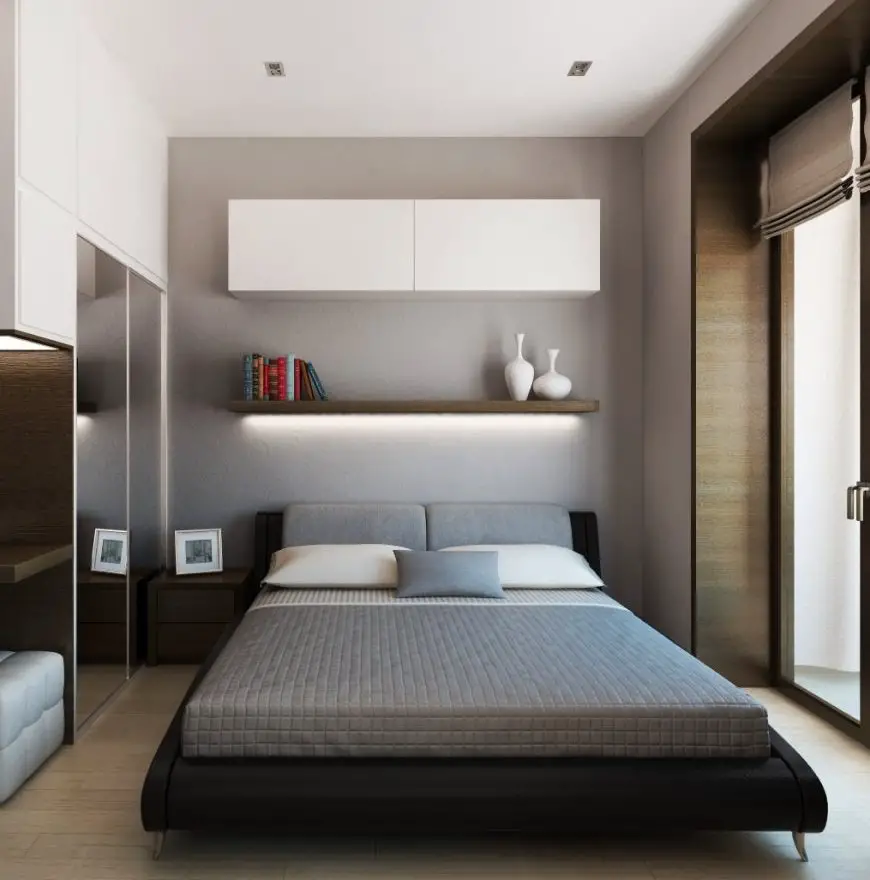
Arranging Furniture in a Bedroom: Tips and Ideas
Deciding where to place furniture in a bedroom can greatly impact the overall feel and functionality of the space. Here are some key considerations and guidelines for setting up your bedroom furniture in the correct way:
Bed Placement: The bed is typically the focal point of a bedroom. Place it against the longest wall, ideally opposite the doorway. This not only provides balance but also allows for easy access and a clear view of the room.
Traffic Flow: Ensure there’s enough space to move around comfortably. Leave a minimum of 2-3 feet of clearance around the bed and other furniture to allow for easy movement.
Furniture Arrangement: Arrange other furniture pieces around the bed in a way that complements the room’s layout. Consider symmetry for a balanced look, placing nightstands on either side of the bed.
Functionality: Think about how you use the space. If you watch TV in the bedroom, position it so it’s easily visible from the bed. If you have a reading nook, ensure good lighting and a cozy chair.
Symmetry: Symmetrical arrangements often create a pleasing and balanced look. If your room allows, place furniture in pairs to achieve this effect.
Experiment: Don’t be afraid to try different arrangements before settling on the final layout. Use furniture templates or simply move pieces around until you find the most appealing and practical setup.
Personal Touch: Incorporate your personal style into the arrangement. Add decorative elements, artwork, and textiles that reflect your taste.

Storage: Maximize storage by utilizing furniture with built-in storage, such as under-bed drawers or a storage bench at the foot of the bed.
Natural Light: Take advantage of natural light by positioning the bed and other furniture to avoid blocking windows. This also enhances the overall aesthetic.
Scale and Proportion: Choose furniture that suits the scale of the room. Oversized furniture can make a small room feel cramped, while too-small pieces can get lost in a large room.
Functionality: Consider the function of the room. If you have a desk, place it near an outlet for easy access to charging devices. Create a cozy reading corner near a window if you enjoy reading.
Arrange the furniture in the small bedroom
It can be challenging to make a tiny area comfortable and functional while yet maintaining as much open space as feasible. Drawing up a plan, either on paper or using a specialist computer, is the first step of incompetent planning. No matter how small the bedroom is, ergonomics—the principles for the best item arrangement—must be taken into consideration.
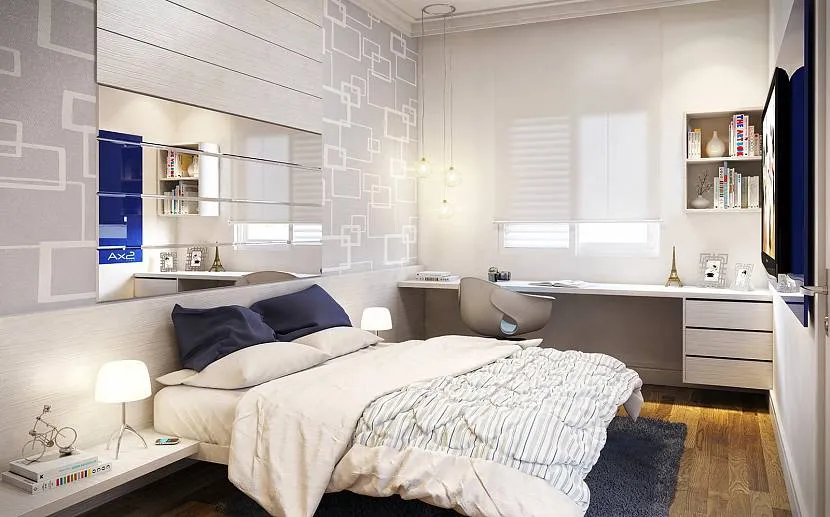
The visual layout is good because it allows you to take into account the area of the room, its shape, and features (for example, access to the balcony).
The method makes it possible to correctly zone the bedroom, if necessary, by allocating a work or children’s area, as well as to sort out several ways of arrangement in order to choose the best option. The following rules will help to make a small bedroom comfortable:
- Choose a bed according to height. The bed occupies a considerable part of the bedroom, but it is impossible to save on its size. If quality sleep is important to you, choose a bed that exceeds your height by at least 30 cm.
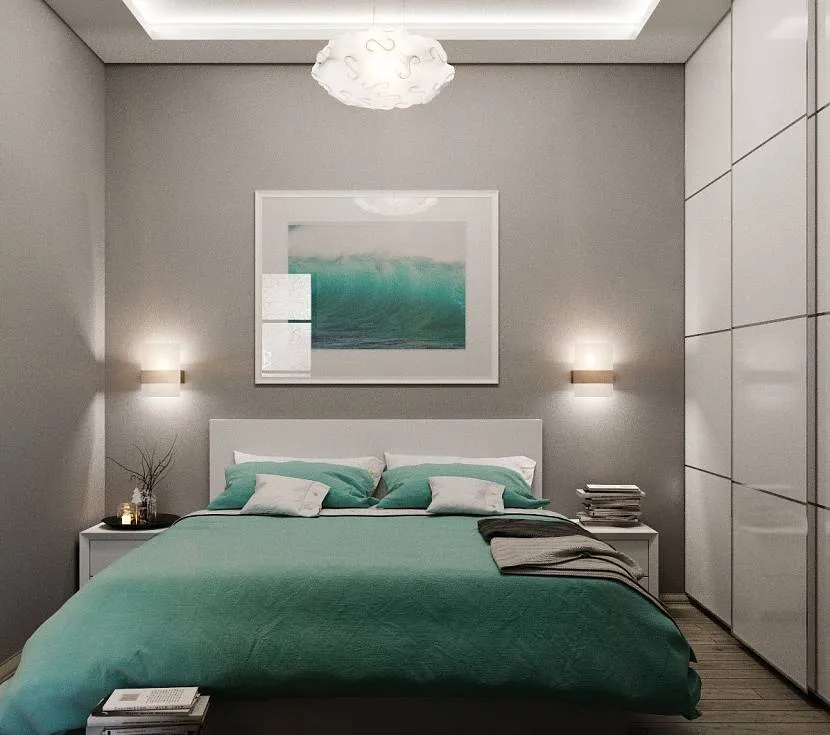
- Movement shouldn’t be impeded by furniture. It is deemed adequate to leave 70 cm on either side of the bed and at least 1 m between pieces of furniture (such as a bed and a dressing table) (minimum).
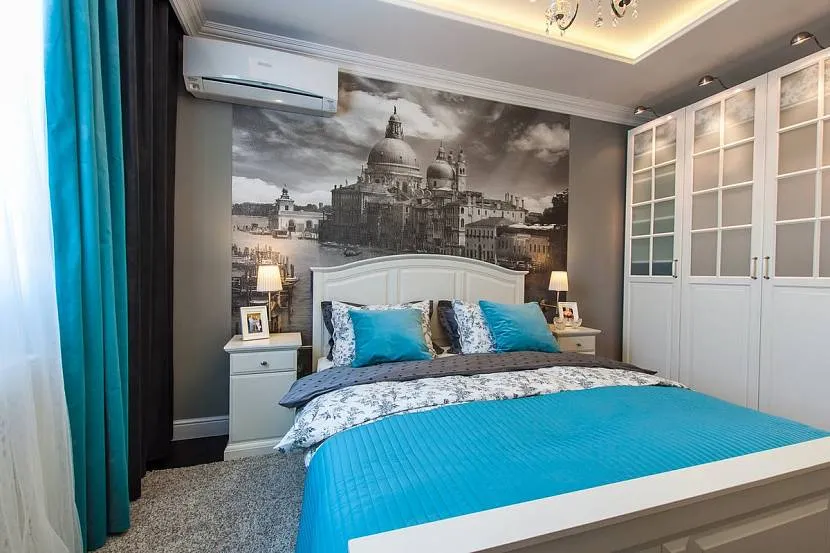
- Give the closet and chest of drawers room to be used comfortably.
- Avoid falling victim to prejudices and get rid of anything unnecessary. Even if you have a bedside table next to your bed your entire life, you could have to give it up at that point.
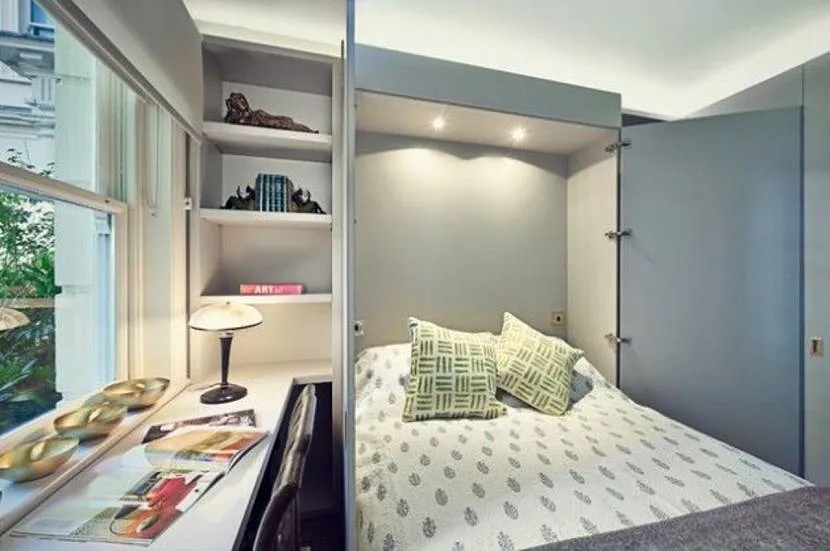
Secrets of Choosing Furniture
Careful furniture research is necessary for the design of a tiny bedroom so that the final result does not resemble a furniture warehouse. A bed is always the focal point of a bedroom; the owners choose the rest of the furnishings. The following things, either all or some of them, make up a standard set:
- Wardrobe. The majority of the time, a mirrored wardrobe holds all of the items. If a built-in wardrobe can be installed, that is good.
- tables or nightstands. Items with several uses that let you keep the essentials close in your hands, such as a phone, a book, and glasses.
- With a cozy pouf, the dressing table is a dressing table. Any lady who is self-respecting must have this and would never refuse it.
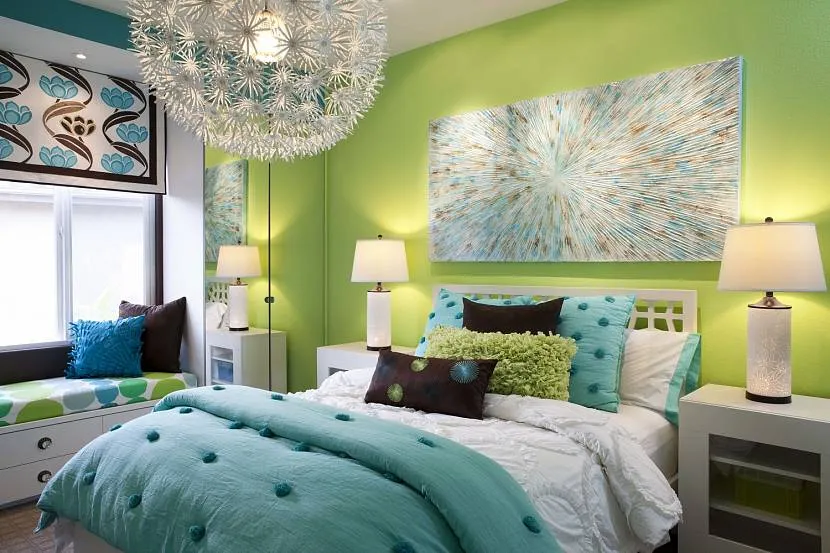
How many pieces of furniture should be in a small bedroom?
But remember: too many pieces can overpower a small bedroom and make it feel cluttered, and pieces that are too small won’t make much of an impact. Choosing a few larger pieces can give the room several major focal points, without feeling too busy.
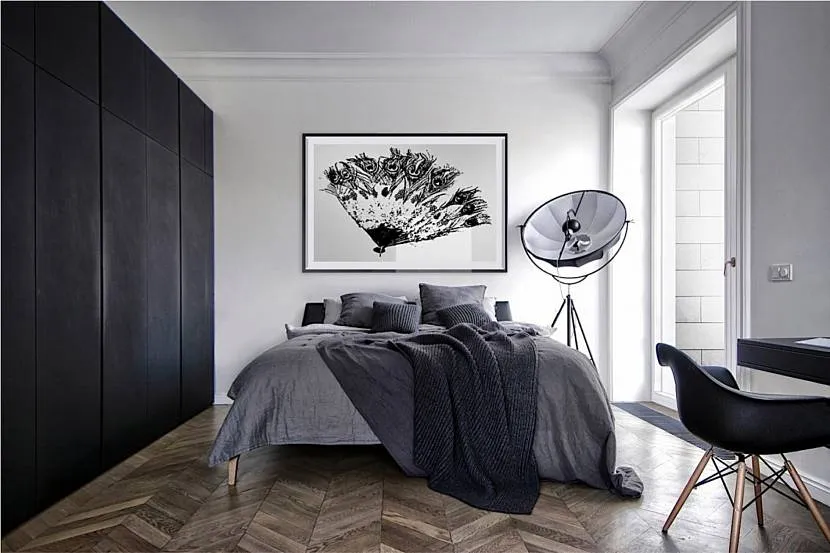
What color bedding makes a room look bigger?
Blue, white, grey, and green are cool colors. These tend to expand a room and make it feel larger.
What is the best seating for small spaces?
Sectionals may take up less square footage than two or three pieces of smaller furniture. Consider a sectional instead of a sofa and accent chair combination. Choose a sectional with thin or low arms, or one that is up on legs to keep your space feeling open and airy
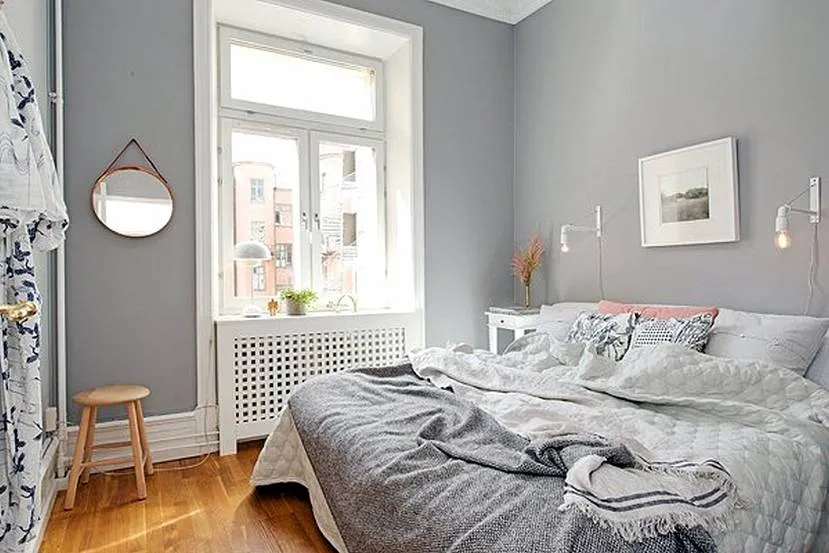
How can I arrange a small bedroom?
Arranging a small bedroom can be a creative and space-efficient process. Here are some tips to help you make the most of your small bedroom:
- Declutter: Start by getting rid of items you no longer need. A clutter-free room will feel more spacious.
- Choose the Right Bed: Opt for a smaller-sized bed like a twin or a loft bed to free up floor space. Consider a bed with storage drawers underneath for added functionality.
- Use Vertical Space: Install shelves or wall-mounted storage units to keep your belongings off the floor and create more storage space. Floating shelves can be a stylish choice.
- Furniture Placement: Place your larger furniture pieces (like the bed and dresser) against the walls to create an open area in the center of the room. This will make the room feel more spacious.
- Multipurpose Furniture: Invest in furniture that serves dual purposes. For example, a desk that can also be used as a vanity or a fold-down wall desk.
- Mirrors: Mirrors can create an illusion of more space. Consider hanging a large mirror on one wall.
- Light Colors: Use light and neutral colors for your walls and bedding to make the room feel brighter and more open.
- Under-Bed Storage: Utilize the space under your bed for storage. You can use bins, baskets, or drawers to keep items organized.

- Curtains: Use curtain rods that extend beyond the window frame to create the illusion of larger windows. Light and sheer curtains can also make the room feel more open.
- Keep it Simple: Avoid excessive decor or too many small items that can make the room look cluttered. Opt for a minimalist approach.
- Downsize: Consider downsizing your belongings. Sometimes having fewer things can make a small space more manageable.
- Organize: Invest in closet organizers or storage containers to keep your belongings neatly organized.
- Furniture with Legs: Choose furniture pieces with legs rather than those that sit directly on the floor. This creates a sense of openness.
- Utilize Corners: Don’t waste corner spaces. Corner shelves or corner desks can make good use of this often-neglected area.
- Keep Pathways Clear: Ensure there are clear pathways throughout the room to move around easily.

Optionally added to the bedroom:
- Dresser. A cozy yet unusual item for a small bedroom; in certain interiors, it takes the place of the closet.
- Bench by the bed. A useful thing that is also uncommon.
- Armchair. a comfortable spot for knitting, reading, or using the phone; a floor light will look well next to it.
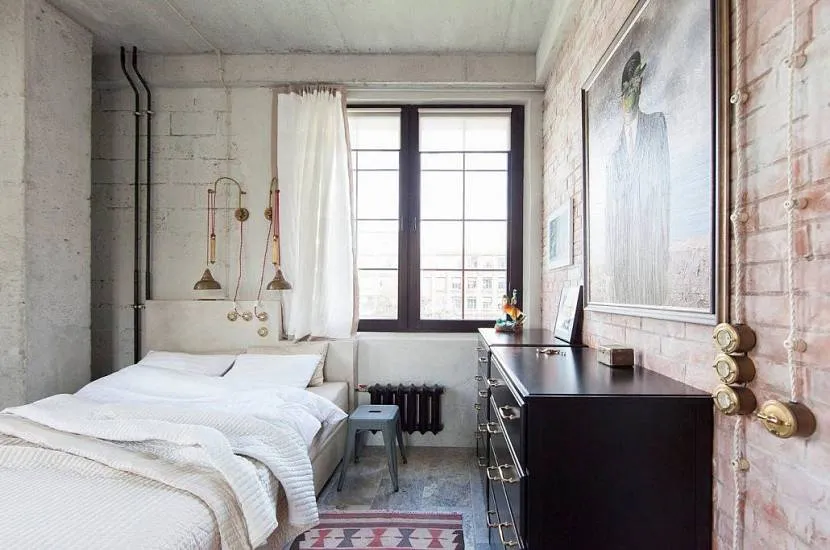
Bedroom shape and furniture arrangement
The compositional center of the bedroom is the bed, therefore, they always start with finding its optimal location. Choosing a place for a bed in a small bedroom is always a compromise between convenience and functionality; in different—shaped bedrooms, it is achieved in different ways:
- In the square. If the walls are the same in length, then this can be considered the best option. The bed (if we are talking about a double bed) is installed with a headboard in the center of any wall, and on the sides, there are cabinets or pencil cases. A wardrobe or chest of drawers is placed against the opposite wall. Smaller pieces of furniture find a place near the walls with a window and a door.

- Selecting a low bed and placing it on a podium with useful drawers is a smart way to save room. You can forgo the chest of drawers in this situation and opt for a smaller cabinet.
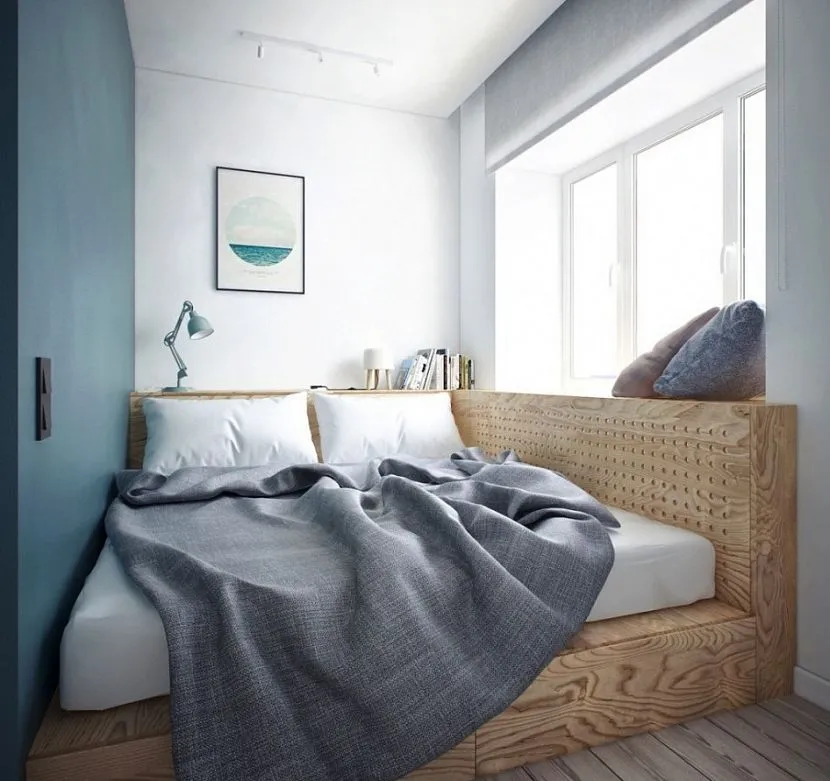

Typically, they work to make a tiny area appear larger by hanging numerous rows of shelves, sticking wallpaper with a large pattern to the accent wall, or hanging a big picture. You can paste perspective wallpaper and hang a mirror on a long wall.

- There are no specific guidelines on how to arrange a bedroom with an unusual shape. Attics, rooms whose layout has changed as a result of the renovation, and old non-residential buildings all have peculiar shapes. Such a bedroom’s layout has untapped potential for using furniture with unusual shapes (for example, a round four-poster bed).

- How to arrange bedroom furniture The window is used productively; a table is placed close by. A non-traditional bedroom can look spacious and inviting with enough care and the right color choices.
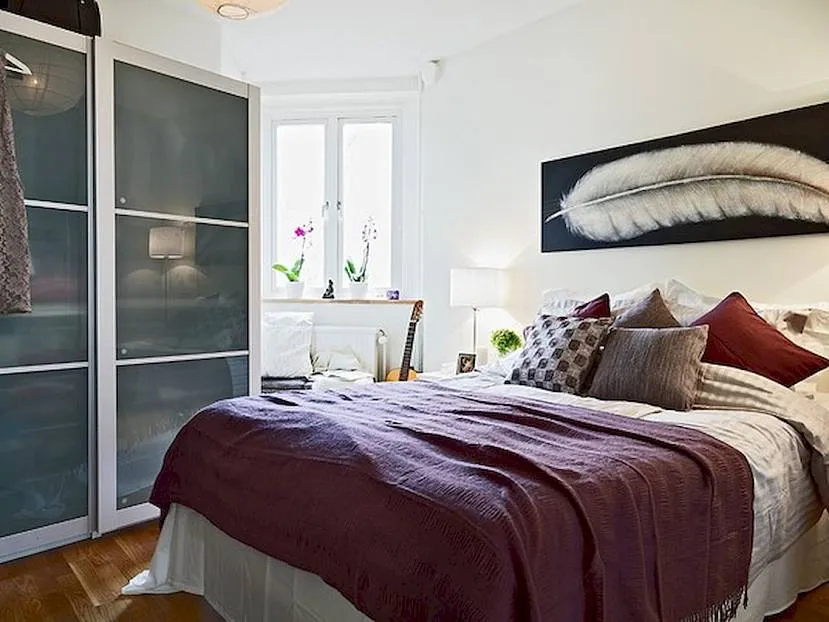
Layout arrange bedroom furniture
Thinking out the bedroom’s layout is the initial step in the process. Experts point out a few fundamental ideas that will make it easier to fit all you need in the space:
- Keep the room’s color palette light.
- The location of the room must be considered while selecting a color scheme. Warm shades are preferred if the bedroom is on the north side; cool shades if it is on the south.
- Create zones by allocating a sleeping area.
- Make the most of whatever is available area.
- Furniture that is hung is preferred.
- Use transparent, translucent drapes on the windows.
- Put more illumination sources in place.
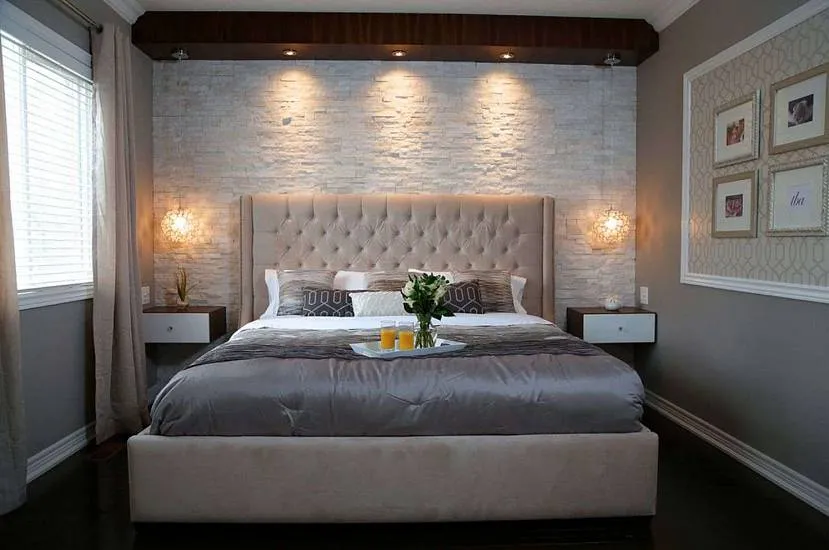
6 popular styles
Arrange bedroom furniture The key requirement for the bedroom design is that it should be as copied as possible, enabling you to unwind and have a good night’s sleep. There are numerous methods for picking a small bedroom design, but the majority are focused on a light color scheme:
- Modern in style. Unobtrusive beige, gray, or sand-white color schemes were used to create the style. Without any further decoration, plain shapes are chosen for the furniture. Mirrors, shiny surfaces, open shelves, and fabrics without obtrusive designs will all assist in opening up the room. It’s crucial to choose the right illumination; you’ll need a bedside lamp or sconces, possibly with spot LED lighting.

- In traditional fashion. Luxurious accents won’t hurt in even the smallest bedroom. The soft color scheme is softened by opulent shades of chocolate, lilac, and emerald. The walls are decorated using stucco, panels, moldings, and decorative plaster. Carved decorations with gold or patina are used to embellish the furniture and the mirror frame. Traditional bookshelves, dressers, and cabinets have tall, curved legs. Satin, velvet, and brocade are chosen as the magnificent textiles.
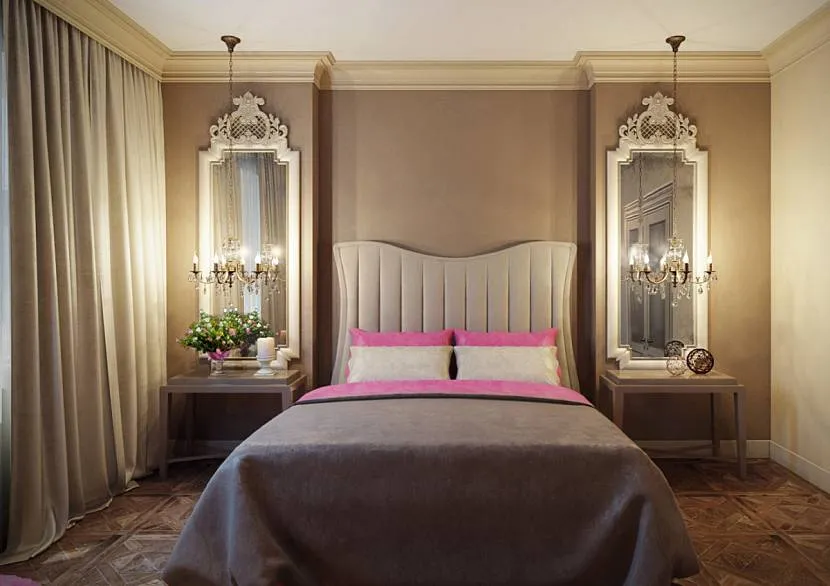
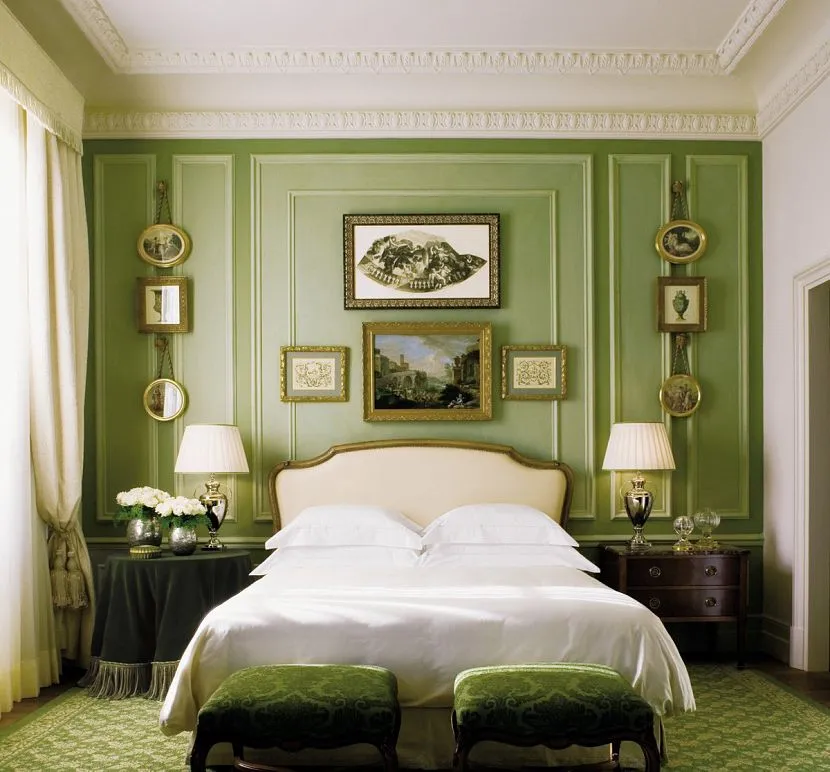
- How to arrange bedroom furniture in Provence style. Romantic interior in pastel and natural colors with simple light furniture (a stylish trick is to paint it white). The use of small floral prints in textiles, curtains, and wallpaper is encouraged. It is worth avoiding a large number of frills and ruffles in which the bedroom will drown.


- Loft design arranges bedroom furniture flowers a chic “industrial” design choice with poor workmanship and no consideration for comfort. You can construct an approximation of brickwork on one of the walls in place of blinds, plaster, or paint on the walls. Simple furniture in a lamp with a big metal ceiling. The colors used to design the bedroom are white, gray, black, and brown.
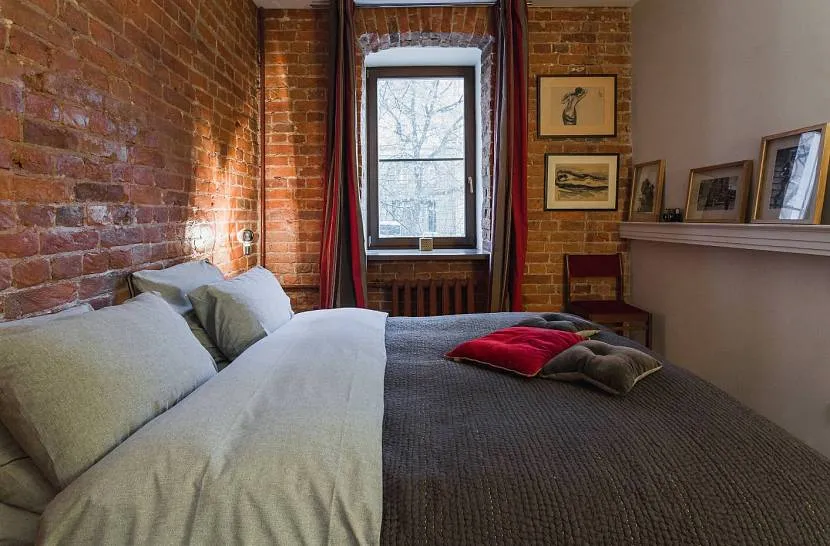

- In minimalist fashion. A sensible option for a small bedroom that leaves the most open space possible. Ideally, such a room would contain only a bed and a few bedside tables, with all other furniture concealed in drawers or integrated into the walls. Everything has minimal finishing touches, including furniture, textiles, lighting, and color scheme.
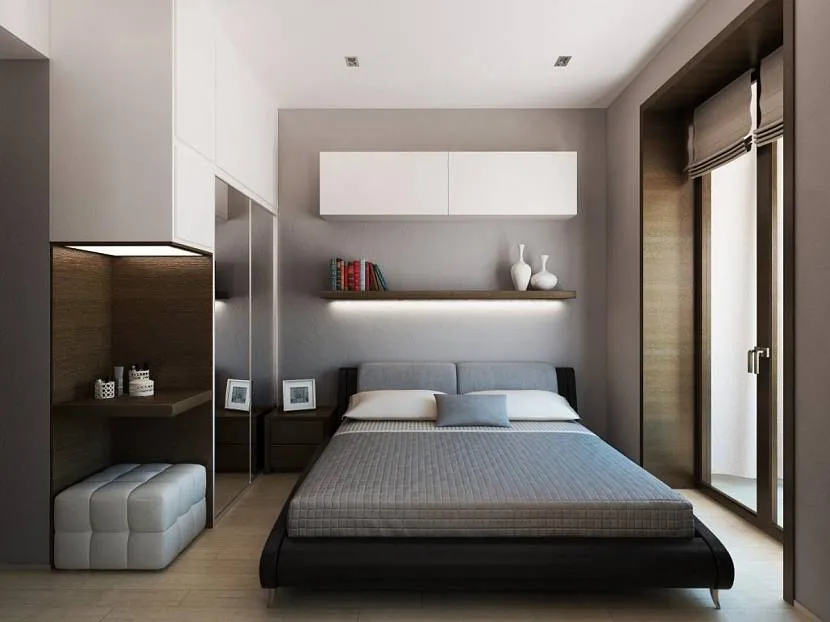

In the manner of Scandinavia. A solution that is appropriate for a tiny bedroom because of its subtle color palette that exudes freshness. Metal, glass, and natural wood are preferred. The furniture is useful and utilitarian; particularly relevant elements are modular and transformable. There isn’t much decoration in this space, just like in minimalism, and plain textiles are favored.

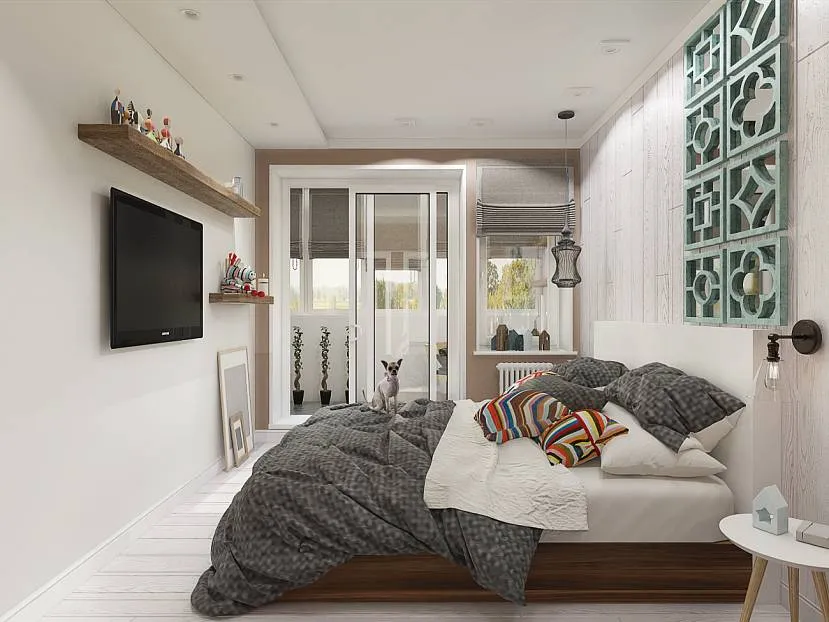
Conclusion
There are other methods besides using mirrors, light hues, and photo wallpapers to visually expand volume. The use of an asymmetrical furniture arrangement and paying attention to versatile products are both recommended by designers. For instance, it is preferable to get a bed with drawers and create a desk with hinges.

I joined Appartenville in February 2021 as a content editor. After studying English literature at university, I worked as an e-commerce website editor, content author, and purchasing intern for several independent luxury and lifestyle retail companies. My role at Appartenville combines my love, experience, and passion for the world of design and the desire to create inspiring written content. As for my personal style, I am a big fan of color and drawing, especially I like the pastel color scheme. I also enjoy discovering new trends, brands, and products, whether it’s fashion, interior design, or lifestyle my wish list for buying new things is endless.
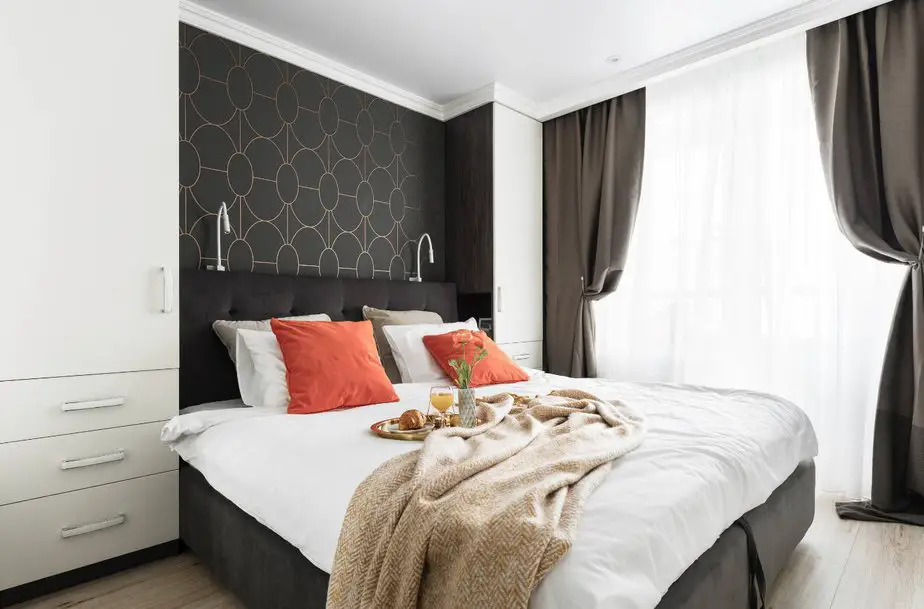
Leave a Reply